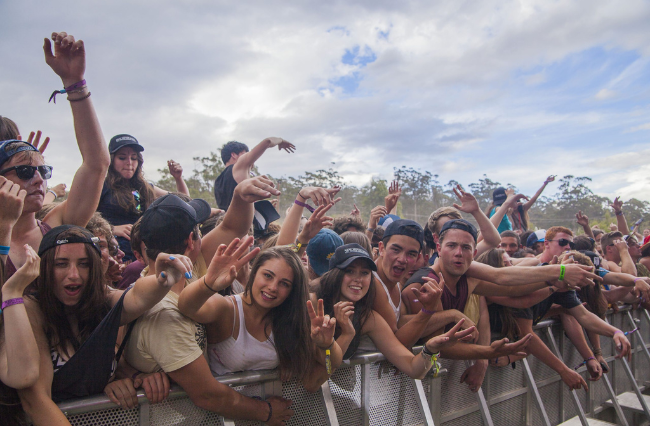Before festival-goers across Australia could begin assembling their colourful outfits and dust off their camping gear for the biggest music festival on the Australian calendar, Splendour in the Grass was unexpectedly cancelled last month.
While big stadium concerts are selling out and even adding extra shows due to high demand, regional music festivals like Groovin the Moo (GTM), Coastal Jam, Dark Mofo and Falls Festival are struggling to fill venues, resulting in cancellations. According to data from the Australian Festival Association, more than 25 music festivals across Australia have been cancelled since 2022.
Why is this happening?
Since its inaugural event in 2009, the regional Victorian town of Bendigo has remained a favoured destination for GTM. Manager of Tourism and Major Events at City of Greater Bendigo Terry Karamaloudis says that the GTM music festival prides itself on investing in local communities, and estimates that Greater Bendigo will lose millions in economic benefits after its cancellation.
“Groovin the Moo has always been a multi-million dollar injection into our local economy,” he tells upstart.
“There has been a lost opportunity in accommodation, food and beverage, and entertainment for the community of Bendigo.”
The Australian music festival scene represents a significant market for promoters, featuring diverse offerings across various genres, yet this has led to a large competition within the industry.
For Dr. Sam Whiting, who researches capital and labour in creative industries, the recent wave of festival cancellations in Australia reflects shifts in people’s musical preferences.
“The problem of the overall saturation in the Australian festival market has been a long term one,” Whiting tells upstart.
“What happened post-pandemic is that all these festival producers rushed back on sight thinking there would be massive demand and it just wasn’t there. Demand had shifted and audiences had shifted in their consumption habits.”
Other factors are cost of living, public liability, staffing and government funding. According to the Creative Australia’s first Soundcheck report, it costs on average $3.9 million to run a music festival in Australia. Inflation has pushed up the cost of almost every element whether it’s logistics, workers, food or the acts themselves.
Results from the National Arts Participation Survey show that Australians are concerned about the cost of arts events, with three in 10 Australians saying they didn’t attend because of price increases.
Meeting payment requirements also takes a lot of effort for event organisers, especially when international artists are headlining to attract big audiences. Managing director of Australian Festival Association Mitch Wilson explains the reasons why festivals in Australia are finding it difficult to attract international artists.
“Artist fees, particularly international artists fees, are incredibly hard to provide an enticing enough offer to some of those big artists with the strength of the Australian dollar,” Wilson tells upstart.
“There are so many opportunities for international artists to play in the Northern Hemisphere at the moment and the recovery over there post-pandemic has been much stronger…I think everyone would love to see more Australian artists dominating headlines, but festivals aren’t the right setting to make that happen.”
Public liability insurance is essential when putting on these sorts of festivals and the cost of that has soared in some cases to 400 percent. Whiting explains why insurance costs more to run festivals than concerts.
“Stadiums host major sporting events and are permanently set up as venues for thousands of people,” he says. “They are quite well resourced in infrastructure in terms of food, beverage and toilets.”
“The insurance for hosting a regional music festival would be relatively more than a stadium concert because there is more risk when hosting an outdoor regional festival.”
Extreme weather conditions also play a part. According to Green Music Australia, at least 47 festivals have been partially or fully shut down since 2015 because of extreme weather. This includes the Pitch Music and Arts Festival held in the remote grounds of Moyston, near Ararat in Western Victoria, which was cancelled on 9 March this year due to extreme fire danger.
The uncertainty of music festivals occurring has seen people become a lot more selective about their discretionary spending. Whiting believes festivals that target a specific audience to cater for a more immersive experience will continue to thrive in the market and most likely be the future for festivals in Australia.
“What I’m seeing in terms of those festivals doing it tough are the multi-genre, one-day music festivals that give audiences a bit of everything but aren’t catering to a specific audience,” he says. “They are also not offering an immersive festival experience with camping.”
“Festivals with a bit of everything could be on the way out, because those audiences don’t really exist.”
Article: Owen Watts is a third-year Bachelor of Media and Communications (Journalism) student at La Trobe University. You can follow him on Twitter @owenwatts283.
Photo: by David Burke is available HERE and is used under a Creative Commons Licence. This image has not been modified.







